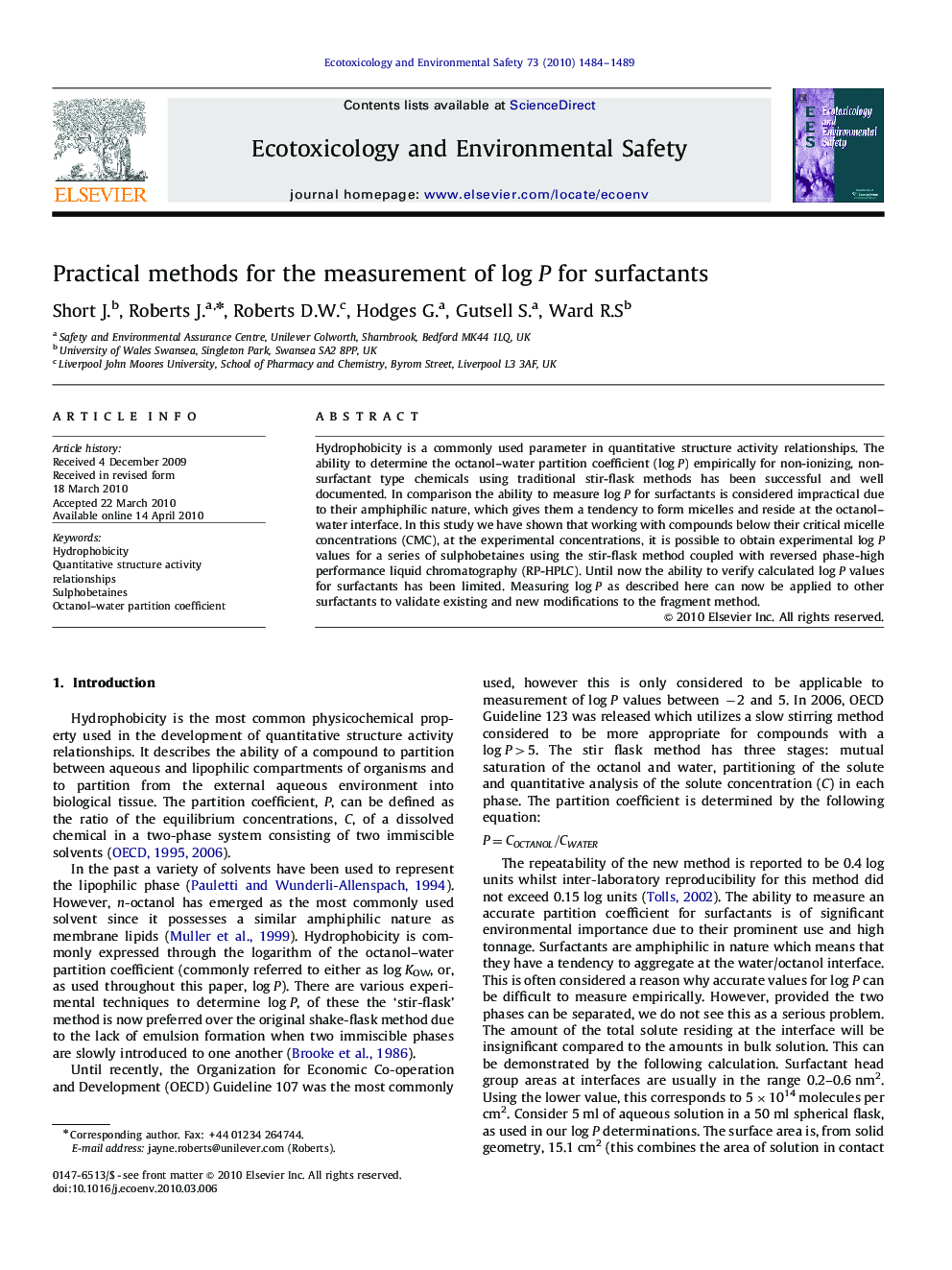| Article ID | Journal | Published Year | Pages | File Type |
|---|---|---|---|---|
| 4421178 | Ecotoxicology and Environmental Safety | 2010 | 6 Pages |
Hydrophobicity is a commonly used parameter in quantitative structure activity relationships. The ability to determine the octanol–water partition coefficient (log P) empirically for non-ionizing, non-surfactant type chemicals using traditional stir-flask methods has been successful and well documented. In comparison the ability to measure log P for surfactants is considered impractical due to their amphiphilic nature, which gives them a tendency to form micelles and reside at the octanol–water interface. In this study we have shown that working with compounds below their critical micelle concentrations (CMC), at the experimental concentrations, it is possible to obtain experimental log P values for a series of sulphobetaines using the stir-flask method coupled with reversed phase-high performance liquid chromatography (RP-HPLC). Until now the ability to verify calculated log P values for surfactants has been limited. Measuring log P as described here can now be applied to other surfactants to validate existing and new modifications to the fragment method.
